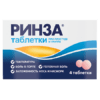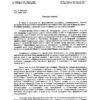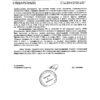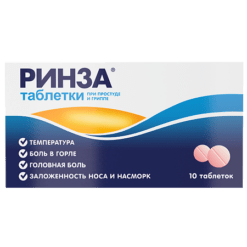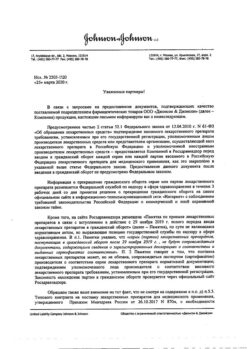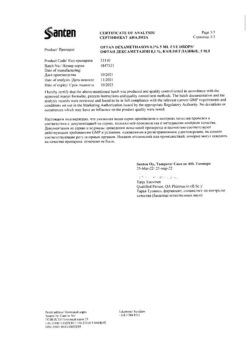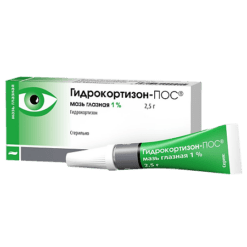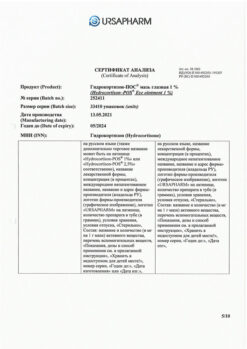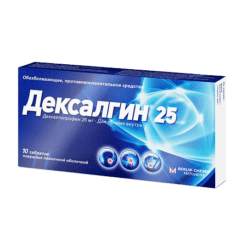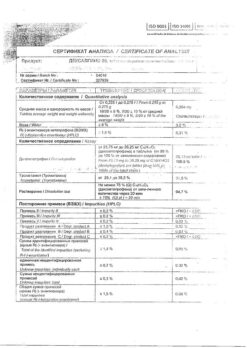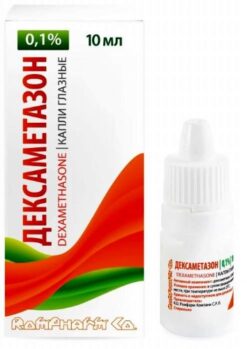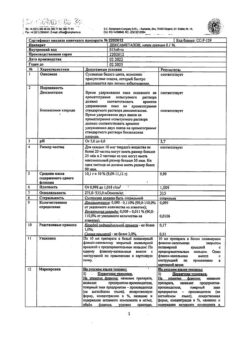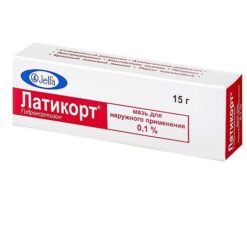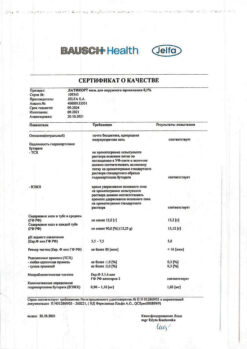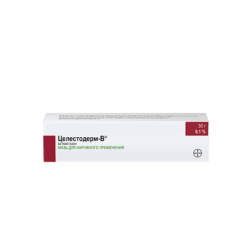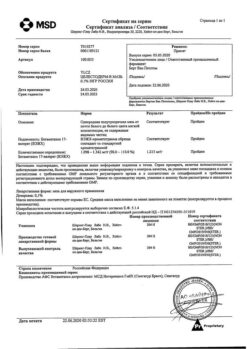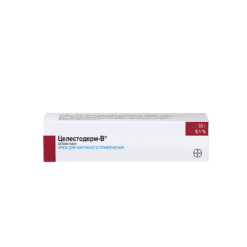No products in the cart.
Rinza, tablets 4 pcs
€1.00
Out of stock
(E-mail when Stock is available)
Description
Combined drug.
Paracetamol has analgesic and antipyretic effect. It reduces the pain syndrome observed during colds – sore throat, headache, muscle and joint pain, reduces fever.
Phenylephrine is an alpha 1-adrenomimetic. It has a vasoconstrictor effect, decreases edema and hyperemia of mucous membranes of upper airways and sinuses.
Chlorphenamine is a blocker of histamine H1-receptors, has anti-allergic effect, reduces swelling and hyperemia of mucous membranes of the nasal cavity, nasopharynx and accessory sinuses, eliminates eye and nose itching, reduces exudative symptoms.
Caffeine has a stimulating effect on the CNS, resulting in decreased fatigue and drowsiness, increased mental and physical performance.
Indications
Indications
Symptomatic treatment of colds, acute respiratory viral infections, including influenza (fever, pain, rhinorrhea).
Pharmacological effect
Pharmacological effect
Combined drug.
Paracetamol has an analgesic and antipyretic effect. Reduces the pain syndrome observed during colds – sore throat, headache, muscle and joint pain, reduces high temperature.
Phenylephrine is an alpha1-adrenergic agonist. It has a vasoconstrictor effect, reduces swelling and hyperemia of the mucous membranes of the upper respiratory tract and paranasal sinuses.
Chlorphenamine is a blocker of histamine H1 receptors, has an antiallergic effect, reduces swelling and hyperemia of the mucous membranes of the nasal cavity, nasopharynx and paranasal sinuses, eliminates itching in the eyes and nose, and reduces exudative manifestations.
Caffeine has a stimulating effect on the central nervous system, which leads to a decrease in fatigue and drowsiness, and an increase in mental and physical performance.
Special instructions
Special instructions
During the treatment period, you should refrain from taking alcohol, sleeping pills and anxiolytic (tranquilizers) medications. Do not take with other medicines containing paracetamol.
If symptoms worsen or persist after 5 days of using the drug, you should stop taking it and consult your doctor.
The drug may cause drowsiness.
If the medicine has become unusable or has expired, do not throw it into wastewater or onto the street! Place the medication in a bag and place it in the trash. These measures will help protect the environment!
Active ingredient
Active ingredient
Caffeine, Paracetamol, Phenylephrine, Chlorphenamine
Composition
Composition
1 tablet contains:
Active substances:
Caffeine………………………………………….30 mg
Paracetamol ………………….………………500 mg
Phenylephrine hydrochloride………..………….10 mg
Chlorphenamine maleate .…….………..…..……..2 mg
Excipients: colloidal silicon dioxide, corn starch, corn starch (for 20% paste), povidone (K30), sodium methyl parahydroxybenzoate, magnesium stearate, talc, sodium carboxymethyl starch (type A), crimson dye [Ponceau 4R].
Pregnancy
Pregnancy
Due to the lack of clinical data, the safety of the drug during pregnancy and breastfeeding has not been established, therefore the use of the drug in this category of patients is contraindicated.
Contraindications
Contraindications
severe atherosclerosis of the coronary arteries;
arterial hypertension;
portal hypertension;
diabetes mellitus;
simultaneous use of tricyclic antidepressants, monoamine oxidase inhibitors (MAO), beta-blockers;
hypersensitivity to paracetamol and other components included in the drug;
taking other drugs containing substances included in the drug Rinza®;
pregnancy, lactation period;
children’s age (up to 15 years);
alcoholism.
Side Effects
Side Effects
Allergic reactions: skin rash, itching, urticaria, angioedema, anaphylactic shock.
From the nervous system: headache, dizziness, drowsiness, difficulty falling asleep, increased excitability.
From the cardiovascular system: increased blood pressure, tachycardia, palpitations.
From the digestive system: nausea, vomiting, pain in the epigastric region, diarrhea, dry oral mucosa, hepatotoxic effect.
From the senses: mydriasis, accommodation paresis, increased intraocular pressure.
From the hematopoietic organs: anemia, thrombocytopenia, agranulocytosis, hemolytic anemia, aplastic anemia, methemoglobinemia, pancytopenia, leukopenia.
From the urinary system: nephrotoxicity (renal colic, glycosuria, interstitial nephritis, papillary necrosis), difficulty urinating.
Other: bronchospasm.
Serious skin reactions:
Very rare:
– Acute generalized exanthematous pustulosis (AGEP). Acute condition with the development of pustular rashes. It is characterized by fever and diffuse erythema, accompanied by burning and itching. Swelling of the face, hands and mucous membranes may occur;
– Stevens-Johnson syndrome (SJS) (malignant exudative erythema). A severe form of erythema multiforme, in which blisters appear on the mucous membrane of the mouth, throat, eyes, genitals, and other areas of the skin and mucous membranes.
– Toxic epidermal necrolysis (TEN, Lyell’s syndrome). The syndrome is a consequence of extensive apoptosis of keratinocytes, which leads to detachment of large areas of skin at the dermoepidermal junction. The affected skin looks like it has been scalded by boiling water.
If you notice one of the side effects described above, you should stop taking the drug and consult a doctor immediately!
Interaction
Interaction
Enhances the effects of monoamine oxidase inhibitors (MAO), sedatives, ethanol.
Antidepressants, antiparkinsonian drugs, antipsychotic drugs, phenothiazine derivatives – increase the risk of developing urinary retention, dry mouth, constipation.
Glucocorticosteroids increase the risk of developing glaucoma. Microsomal oxidation inhibitors (cimetidine) reduce the risk of hepatotoxicity.
Metoclopramide and domperidone increase, and cholestyramine reduces the rate of absorption of paracetamol. Paracetamol reduces the effectiveness of uricosuric drugs.
When administered simultaneously with barbiturates, diphenin, carbamazepine, rifampicin isoniazid, zidovudine and other inducers of microsomal liver enzymes, the risk of developing the hepatotoxic effect of paracetamol increases.
When chloramphenicol and paracetamol are used together, the half-life of chloramphenicol may increase.
In most patients taking warfarin long-term, infrequent use of paracetamol usually has little or no effect on the international normalized ratio (INR). However, with prolonged regular use, paracetamol enhances the effect of indirect anticoagulants (warfarin and other coumarin derivatives), which increases the risk of bleeding.
A single dose of caffeine increases lithium excretion by the kidneys. Abrupt cessation of caffeine intake may result in increased serum lithium concentrations.
Chlorphenamine simultaneously with monoamine oxidase inhibitors (MAOIs), furazolidone can lead to hypertensive crisis, agitation, and hyperpyrexia.
Concomitant use of phenylephrine with digoxin and other cardiac glycosides may increase the risk of arrhythmia and myocardial infarction.
Phenylephrine when taken with MAO inhibitors can lead to increased blood pressure. Phenylephrine reduces the effectiveness of beta blockers and antihypertensive drugs.
Tricyclic antidepressants enhance the adrenomimetic effect of phenylephrine; simultaneous administration of halothane increases the risk of developing ventricular arrhythmia. Reduces the hypotensive effect of guanethidine, which, in turn, enhances the alpha-adrenomimetic activity of phenylephrine.
Overdose
Overdose
In case of overdose, consult a doctor immediately. Prompt medical attention is critical, even if you do not experience any signs or symptoms.
Caffeine
Symptoms of acute overdose: abdominal pain, vomiting, flushing, fever, chills, agitation, insomnia, irritability, loss of appetite, weakness, tremor, increased muscle tone, state of altered consciousness, delirium, hallucinations, increased blood pressure followed by hypotension, tachycardia, tachypnea, increased diuresis, hypokalemia, hyponatremia, hyperglycemia, metabolic acidosis, seizures, myoclonus and rhabdomyolysis, supraventricular and ventricular arrhythmias.
Symptoms of chronic caffeine intoxication “caffeineism”: irritability, insomnia, anxiety, emotional lability, chronic abdominal pain.
Chlorphenamine
Symptoms: central nervous system depression, hyperthermia, anticholinergic syndrome (mydriasis, flushing, fever, dry mouth, urinary retention, intestinal paresis), tachycardia, hypotension, hypertension, nausea, vomiting, agitation, disorientation, hallucinations, psychosis, convulsions, arrhythmias. Rarely, patients with agitation, seizures, or comatose patients develop rhabdomyolysis and renal failure.
Phenylephrine
Symptoms: nausea, vomiting, irritability, agitation, insomnia, psychosis, convulsions, palpitations, tachycardia, increased blood pressure, reflex bradycardia.
Paracetamol
Symptoms appear after taking more than 7.5 – 10 g: during the first 24 hours after taking – pale skin, nausea, vomiting; anorexia, abdominal pain; increase in prothrombin time, impaired glucose metabolism, metabolic acidosis (including lactic acidosis).
Symptoms of liver dysfunction may appear 12 to 48 hours after an overdose: increased activity of liver transaminases, hepatonecrosis. In severe cases – liver failure with progressive encephalopathy, coma. Rarely, liver failure develops suddenly and can be complicated by renal failure (tubular necrosis).
The threshold for overdose may be lowered in elderly patients and children, in patients taking certain medications (eg, liver microsomal enzyme inducers), alcohol, or who are malnourished.
Treatment: gastric lavage, administration of activated charcoal in the first 6 hours after an overdose, administration of SH-group donors and precursors for the synthesis of glutathione – methionine 8 – 9 hours after an overdose and acetylcysteine 12 hours later. The need for additional therapeutic measures (further administration of methionine and acetylcysteine) is determined by the concentration of paracetamol in the blood, as well as the time elapsed after its administration. Symptomatic therapy.
Short product description
Short product description
Helps relieve the main symptoms of colds, ARVI and flu, because contains a complex of active components.
Storage conditions
Storage conditions
Store out of reach of children, in a dry, dark place at a temperature not exceeding 25°C.
Shelf life
Shelf life
3 years.
Manufacturer
Manufacturer
Unique Pharmaceutical Laboratories, India
Additional information
| Shelf life | 3 years. |
|---|---|
| Conditions of storage | Store out of the reach of children, dry, protected from light at a temperature not exceeding 25°C. |
| Manufacturer | Unique Pharmaceutical Laboratories, India |
| Medication form | pills |
| Brand | Unique Pharmaceutical Laboratories |
Other forms…
Related products
Buy Rinza, tablets 4 pcs with delivery to USA, UK, Europe and over 120 other countries.




